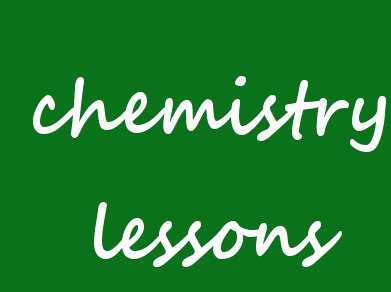New Innovative Learning and Teaching Practices in Chemistry
New information technologies are revolutionizing the way we access information and therefore the way we learn. In fact, education is going through a major transformation. As the number of people attending Massive Open Online Course (MOOC) skyrockets; the number of students who will never set foot on campus grows as a consequence. This is comprehensively transforming students´ learning experience, as well as their interaction with their peers and with educators.
High quality online education content alone is not enough. New developments involve building new learning experiences, an area where chemistry has a lot to benefit. New visualization technologies greatly facilitate the comprehension of complicated concepts, a better understanding of molecular structures, and an easy grasp of the relationship between structure and properties, just to cite a few examples. But there are much more than cool screens and better user-computer interaction gadgets.
Online learning communities are a powerful and effective way to connect people with similar interests, willing to share content and experiences and more importantly to learn together on something they feel passionate about. Indeed technology in general, and online learning communities in particular, have a key role in the future of blended learning.
However, technology is only a tool, and research on the best practices in chemistry education is of paramount importance to turn the fashionable into the effective.
Professor Javier García-Martínez, University of Alicante, Spain
Who |
What |
|
|---|---|---|
|
Professor Peter G. Mahaffy, Edmonton, Canada |
Interactive Simulations and other Visualizations |
Interactive applets developed at the King’s Centre for Visualization in Science (KCVS), The King’s University College, Edmonton, Alberta, Canada, allow learners to visualize the molecular world of chemistry and to playfully understand chemical connections. These visualizations build bridges between the learning that happens for students through classroom lectures and their individual study outside of class. They support innovative teaching and learning, and help students engage deeply with chemistry content. These interactive visualizations also bridge chemistry and sustainability; facts and the evidence that supports those facts; theory and application; and the molecular, symbolic and macroscopic levels. |
|
Learning platform explainingclimatechange.com |
An example is a set of resources that visualizes the fundamental science underlying our climate. The user is able to play around with different parameters to experience impacts and learn to ask good questions about the underlying science. |
|
|
Professor Robert Belford, University of Arkansas at Little Rock, AR, USA |
Cheminformatics OnLine College Courses (OLCCs) |
These are online intercollegiate courses in cheminformatics and chemical information sciences. They have been sponsored by the ACS CHED Committee on Computers in Chemical Education since 1996. Through the use of online guest lecturers they allow colleges to offer courses that they may not normally have the faculty expertise to offer. A course content management system allows instructors to tag material (Teaching and Learning Objects), and leverage the social semantic web concept of a folksonomy to allow customization of content for individual classes, even when the lecturers are concurrently presenting to multiple institutions. |
|
Professor Jan Apotheker, |
StudioVO |
StudioVO consists of various online modules where students learn chemistry content on the basis of short texts, videos, multiple choice tests, or by giving advice to a nearby chemical plant on how to make a particular product greener. |

Who |
What |
Example |
|
Professor Ilka Parchmann, University of Kiel, Germany |
The main goal and research question of this outreach project is how results and approaches of modern research can be used to stimulate and foster science education. The project applies the Model of Educational Reconstruction [1, 2] to design learning environments. The constructed tools, such as hands-on experiments, computer-based data analyses, podcasts, or applications, are implemented into different learning environments like the student lab “klick!”, an exhibition, and teacher training programs. Learning processes as well as students´ expectations are investigated before and after the visit of the student laboratory. |
|
|
Professor Marcy Towns, Purdue University, West Lafayette, IN, USA |
Student-centered classrooms |
Experiments at Purdue University showed that more student-centered pedagogical techniques and more engaging content results in students spending much more time during class engaged in problem-solving to scaffold their learning. |
Also of Interest
|
|
Interview: Where Chemical Education is Heading: Interview with Peter Mahaffy, |
|
|
Interview: Javier García-Martínez on the Commercialization of Research, |
|
|
Video: P. Atkins on Visualizing Chemistry, |

.jpg)




![9 Tips for a Successful PhD [Tip 8]](https://www.chemistryviews.org/wp-content/uploads/2025/04/202503_9-Tips-for-a-Successful-PhD_Tip8-125x94.png)
![9 Tips for a Successful PhD [Tip 7]](https://www.chemistryviews.org/wp-content/uploads/2025/04/202503_9-Tips-for-a-Successful-PhD_Tip7-125x94.png)

![9 Tips for a Successful PhD [Tip 6]](https://www.chemistryviews.org/wp-content/uploads/2025/04/202503_9-Tips-for-a-Successful-PhD_Tip6-125x94.png)
This is great for replacing the lectures about the theories of chemistry, but laboratory learning by doing experiments will still be necessary at the university campuses, won’t it?